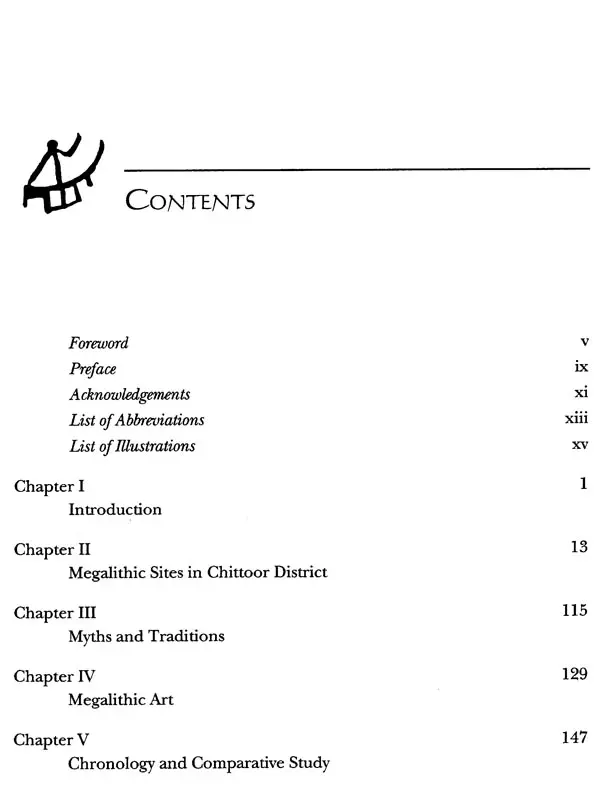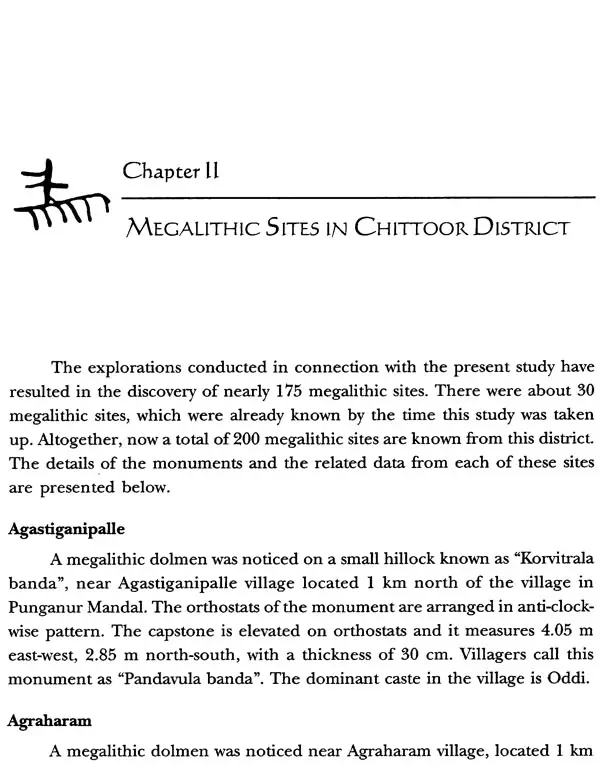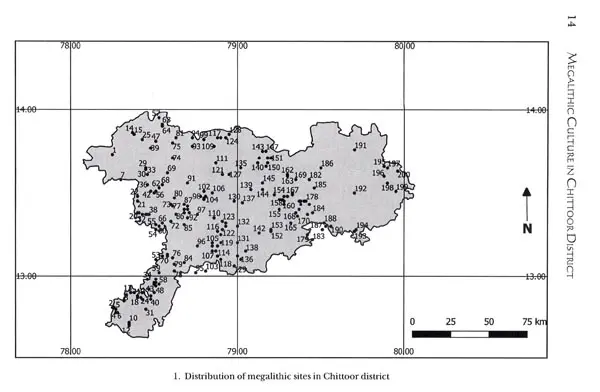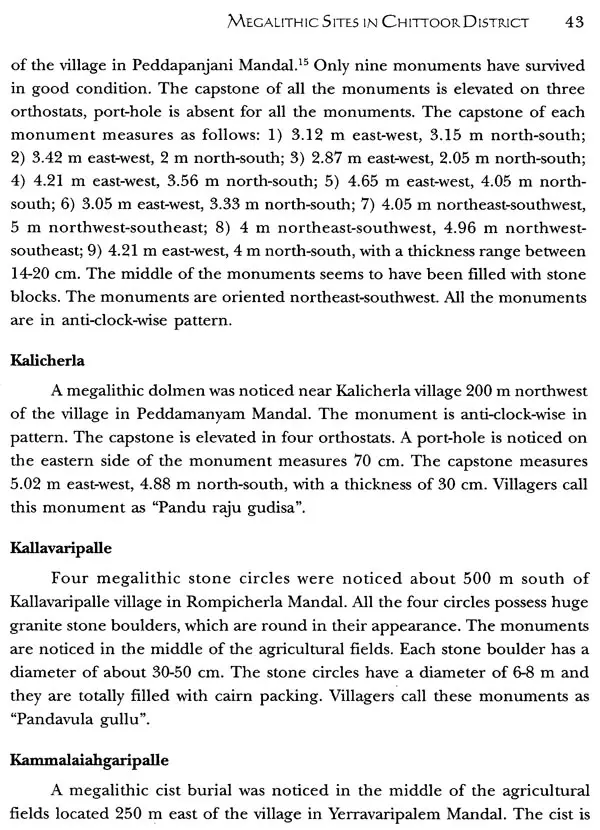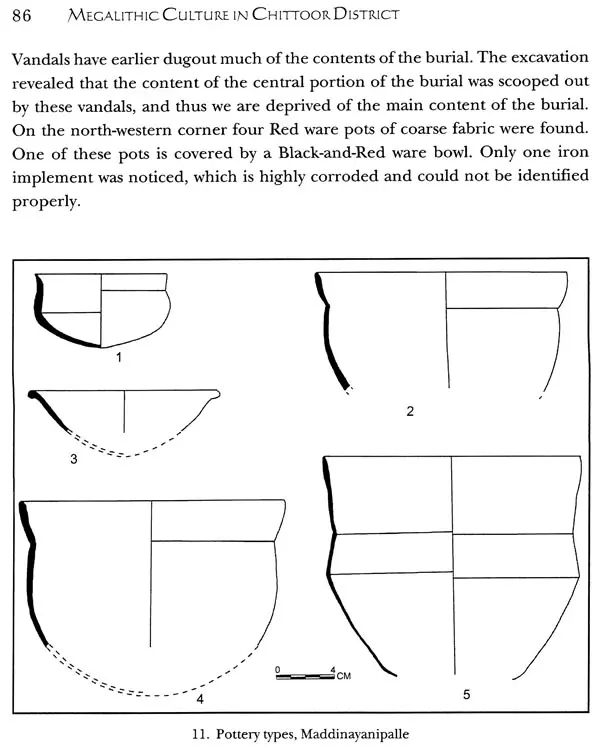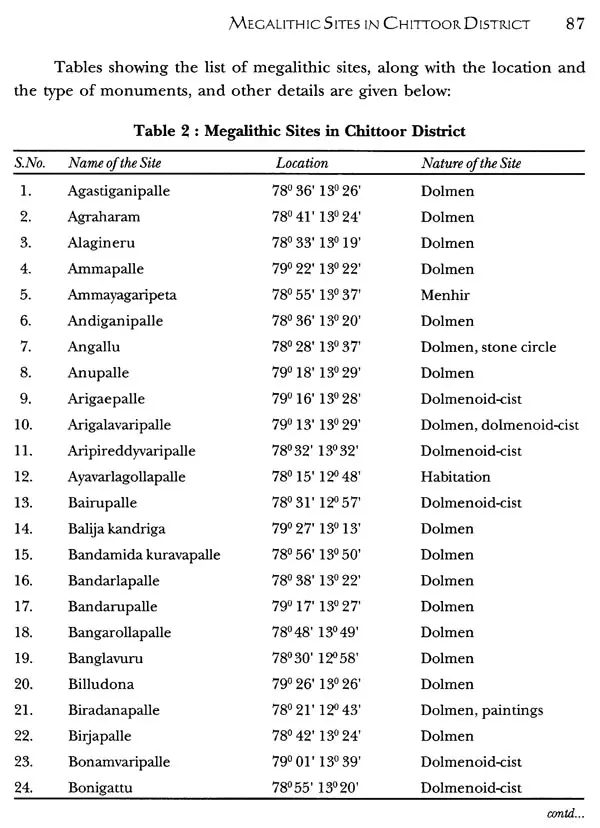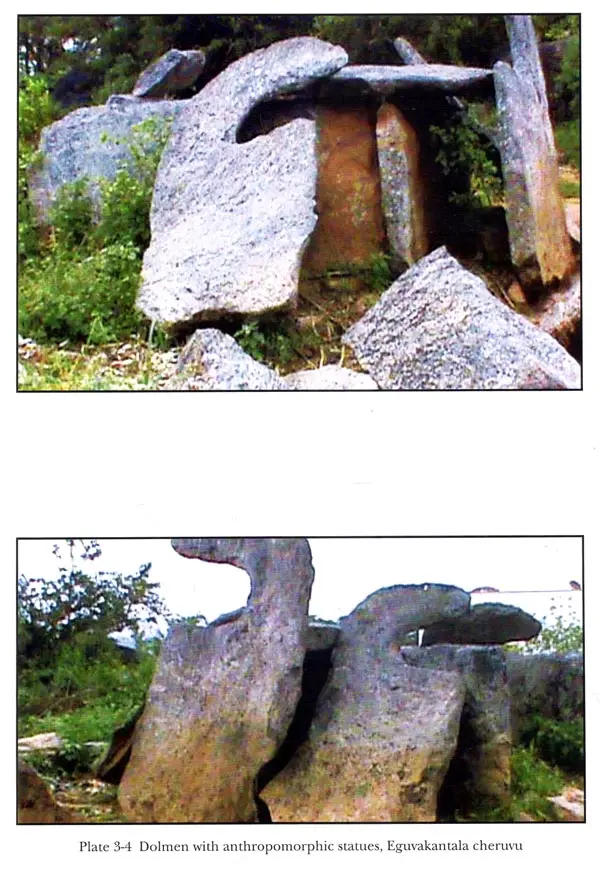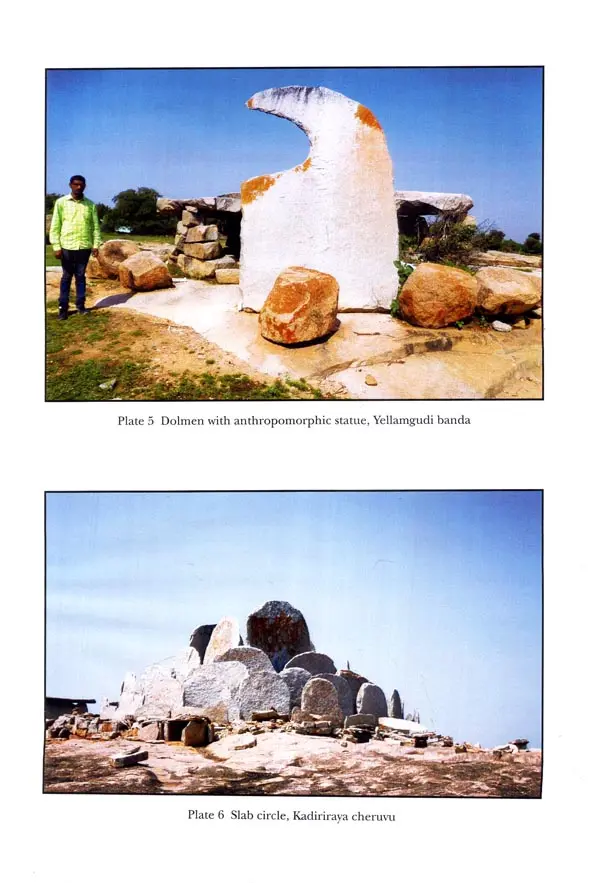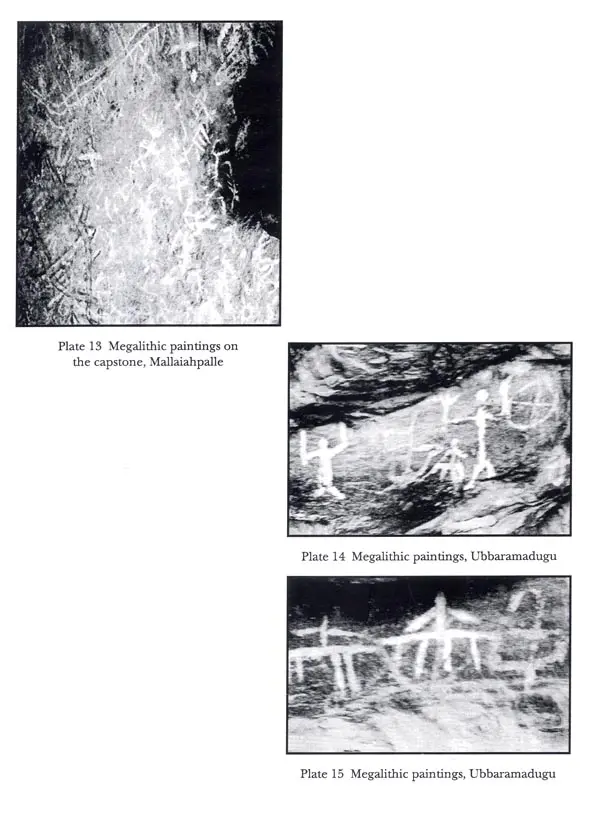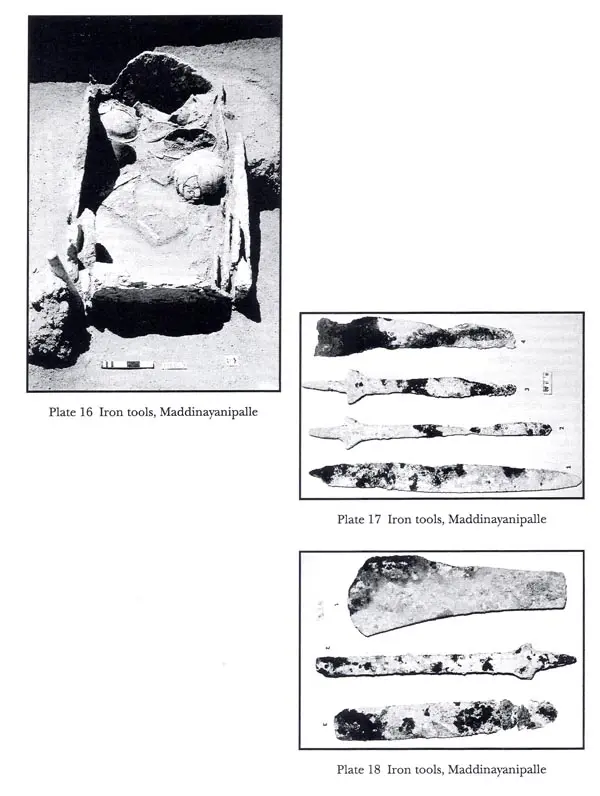About the Book Megalithic culture is a worldwide phenomenon and megaliths have long been the subject of interest to archaeologists and others. Chittoor district is one of the regions in south India, that has shown prolific presence of megalithic monuments.
The present book describes the details of nearly 200 megalithic sites, out of which 10 have habitational evidence, 10 sites have paintings, 6 sites are having anthropomorphic statues and 2 sites have both habitational and burial evidence. These explorations have resulted in the discovery of one of the densest concentration of megalithic sites from south India. Systematic collection of data about the location, terrain, resource base, typology, the myths and traditions about these monuments and the present demographic composition has resulted in a comprehensive data base for understanding this culture to a great extent. The distributional aspects of the typology is well illustrated by the quality maps. The study region has unique types of monuments, which are well illustrated by good number of photographs.
The present book is certainly very useful to the students and scholars working on the protohistoric cultures, as it contains primary field data which is not published elsewhere. At the same time, it would be an interesting source for the general public, who want to know about these impressive monuments constructed by our ancestors.
About the Author Dr V. Ramabrahmam (b. 1968) hails from Tirupati town in Andhra Pradesh. He completed his M.A., Ph.D. from Sri Venkateswara University, Tirupati. His basic research interest was Megalithic Culture in South India, Rock Art, Oral History, etc.
He attended number of seminars in India and abroad and has many research articles in national and international journals on his credit. Presently, he is working as an Assistant Professor in the Department of History and Archaeology, Yogi Vemana University, Kadapa.
Foreword Megalithic culture is a worldwide phenomenon. The monuments are reported from various parts of the world right from England to Japan, including some sites in Central Asia. Numerous megalithic sites have been reported from different parts of our country, especially, south India. In south India, the megalithic people were the first to construct complete edifices out of stone. Interestingly, these edifices were not for residential purpose, but related to the funerary practices. It is obvious that the megalithic community had some belief in post-death life, and due to this, they used to inter large number of pots, tools, weapons and other objects in the megalithic graves. These objects provide us information about the rich material culture and the society in general. The study of the megalithic culture and the monuments has a history of more than two centuries. Large number of sites were discovered and quite a number of them were excavated also. Yet, our understanding of the culture, to a great extent, is vague. We are not sure, whether the megalithic communities represent the unbroken succession of the earlier Neolithic/Chalcolithic communities, or they were entirely a different group practicing megalithism. Further, the variety in the monument types pose questions of the social composition of the megalithic community.
Preface Chittoor district is one of the regions in south India that has shown prolific presence of megalithic monuments. Until the present study was taken up, no systematic work has been carried out to document and study this culture in this region. Further, there are very few publications which refer to these monuments. Thus, the present work is mainly based on field work, which resulted in the discovery of numerous new megalithic sites, some with very interesting features. It is hoped that this study provides primary data for further studies. Prior to the present study, hardly about 30 megalithic sites are known from this region. Now, with the present systematic survey, the total number of sites has gone up to nearly 200, out of which 10 have habitational evidence, 10 sites have paintings and 6 sites are having anthropomorphic statues. Two sites have both habitational and burial evidence.
Enough attention has been paid in collecting the data on myths and traditions about the megalithic monuments. The evidence of megalithic art on monuments and rock shelters is also very interesting. The other unique evidence is the anthropomorphic statues, which are found at six sites, showing wide variety.
Introduction Man has been erecting different structures since time immemorial. These structures are constructed for various purposes like residential, religious, commemorative, storage, defence, etc. Amongst such structures, some of the most imposing and lasting structures were built by the megalithic communities. These structures are, however, related to the funerary customs of these people and hence have to be classified as funerary or commemorative monuments. Such monuments, which exist all over the world, are generally known as `Megaliths.'
In simple terms 'megalith' means 'huge stone'. The term megalith is derived from two Greek terms, "megathos" meaning 'huge' and "lithoi" meaning 'stone') Thus, from the term 'megalith' we can understand that the megalithic monuments are usually constructed using huge stones. In general, this perception is by and large correct. However, we have to remember that, there are megalithic burials, which are not much associated with lithic appendages. For example, we can mention urn burials and sarcophagus. But, even in this category, these burials are associated with lithic appendage in the form of outer stone circle or cairn packing.
Book's Contents and Sample Pages
